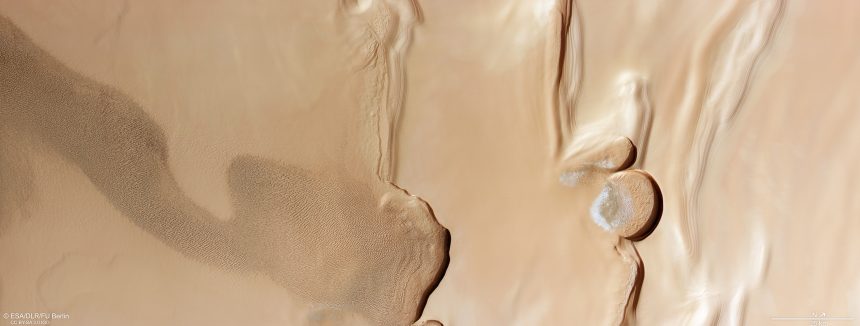Huge sand dunes meet towering walls of powdery ice in a spectacular sight on the Red Planet’s north pole, as seen in stunning new photographs taken by the European Space Agency’s (ESA) Mars Express probe. This amazing encounter demonstrates Mars’ dynamic and varied geography and the intricacy of its geology.
The Polar Landscape
Planum Boreum, the name for Mars’ north pole, is an intriguing area spanning more than a thousand kilometers that is coated in layers of fine dust and water ice that are kilometers deep. These layered structures in the arctic area have developed throughout time as a result of the interplay between dust, water ice, and frost deposition.
Opposites Attract One Another
The High-Resolution Stereo Camera (HRSC) photos taken by Mars Express provide a view into a scenario where opposing forces clash. The massive, undulating sand dunes seem to move in the direction of the bleak ice cliffs. Strong winds have sculpted these cliffs, some of which rise to a height of a kilometer, leaving the arctic plateau covered in captivating spiral-like patterns.
Martian Climate Hints
These photos offer important information on the historical and contemporary atmosphere of Mars. The strata of Planum Boreum retain a record of Martian climate history, with each layer offering information about how the planet’s environment has developed over millions of years. Scientists are trying to put together hints about the periodic cycles of freezing and thawing that Mars has probably experienced by examining these geological structures.
The Enchantment of Discovery
The pictures are a mesmerizing reminder of Mars’ extraordinary beauty and alien qualities. They emphasize the need for ongoing space research, which opens our eyes to the mysteries of our neighboring planet and piques our curiosity about the possibility of extraterrestrial life.








